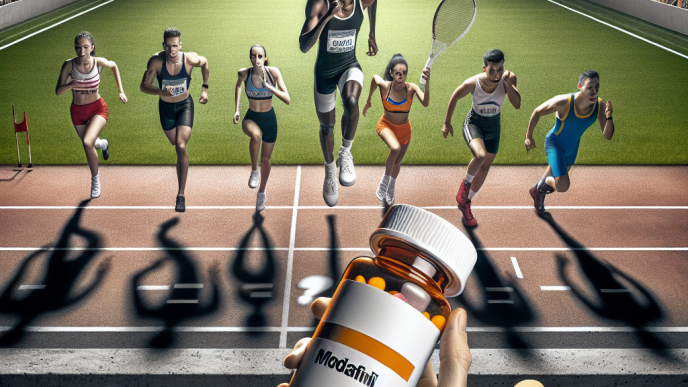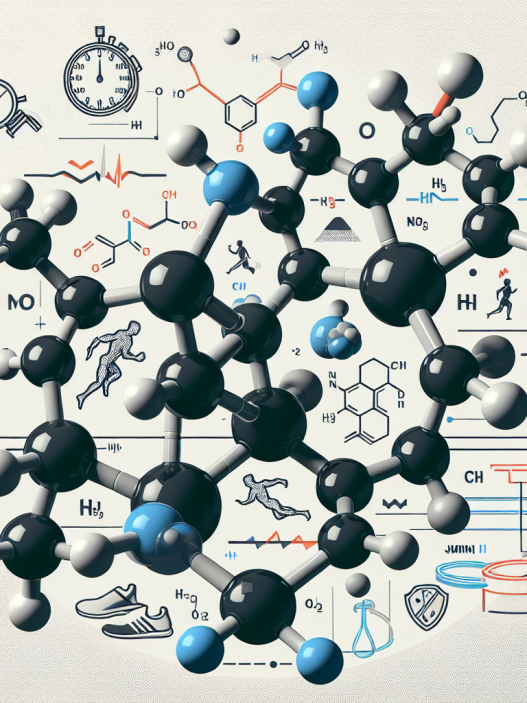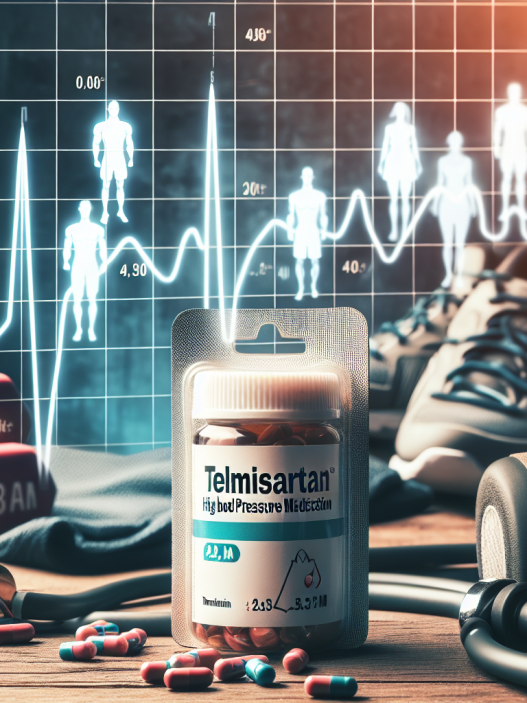-
Table of Contents
- Modafinil (Provigil) and Doping: A Debated Issue in Sports
- The Rise of Modafinil in Sports
- The Controversy Surrounding Modafinil Use in Sports
- The Pharmacokinetics and Pharmacodynamics of Modafinil
- The Role of WADA and Anti-Doping Organizations
- Expert Opinion on Modafinil Use in Sports
- Conclusion
- References
Modafinil (Provigil) and Doping: A Debated Issue in Sports
The use of performance-enhancing drugs in sports has been a controversial topic for decades. Athletes are constantly seeking ways to gain an edge over their competition, and unfortunately, some turn to banned substances to achieve this. One such substance that has been at the center of doping debates is modafinil, also known by its brand name Provigil.
The Rise of Modafinil in Sports
Modafinil is a wakefulness-promoting agent that was originally developed to treat sleep disorders such as narcolepsy and sleep apnea. However, it has gained popularity in recent years as a cognitive enhancer, with claims of improved focus, concentration, and alertness. This has led to its use by athletes in various sports, including cycling, running, and even chess.
One of the main reasons for the rise of modafinil in sports is its ability to mask fatigue and improve endurance. This is especially appealing to athletes who participate in long-distance events, where mental and physical stamina are crucial for success. In fact, a study by Roelands et al. (2015) found that modafinil improved cycling performance in trained athletes by reducing perceived exertion and increasing power output.
Another factor contributing to the use of modafinil in sports is its relatively low risk of detection. While it is on the World Anti-Doping Agency’s (WADA) list of prohibited substances, it is not routinely tested for in standard drug tests. This has made it an attractive option for athletes looking to gain an advantage without the fear of getting caught.
The Controversy Surrounding Modafinil Use in Sports
Despite its potential benefits, the use of modafinil in sports has sparked controversy and raised ethical concerns. One of the main arguments against its use is that it goes against the spirit of fair play and gives an unfair advantage to those who use it. This is especially true in sports where mental acuity and focus are crucial for success, such as chess or shooting.
Moreover, there are concerns about the potential health risks associated with modafinil use in sports. While it is generally considered safe when used as prescribed, there is limited research on its long-term effects, especially in healthy individuals. Some experts also worry about the potential for abuse and addiction, as modafinil can be habit-forming.
Furthermore, the use of modafinil in sports raises questions about the integrity of the sport and the message it sends to young athletes. By allowing the use of performance-enhancing drugs, we are sending the message that winning is more important than fair play and the health and well-being of athletes.
The Pharmacokinetics and Pharmacodynamics of Modafinil
In order to understand the potential effects of modafinil on athletic performance, it is important to examine its pharmacokinetics and pharmacodynamics. Modafinil is rapidly absorbed after oral administration, with peak plasma concentrations reached within 2-4 hours (Darwish et al. 2009). It has a half-life of approximately 12-15 hours, meaning it can stay in the body for a significant amount of time.
The exact mechanism of action of modafinil is not fully understood, but it is believed to work by increasing the levels of dopamine, norepinephrine, and histamine in the brain. These neurotransmitters play a role in regulating wakefulness, alertness, and mood, which may explain the cognitive-enhancing effects of modafinil.
However, it is important to note that the effects of modafinil may vary from person to person, and its use may not necessarily lead to improved performance in all athletes. Factors such as individual response, dosage, and timing of administration can all influence the effects of modafinil on athletic performance.
The Role of WADA and Anti-Doping Organizations
In response to the growing use of modafinil in sports, WADA and other anti-doping organizations have taken steps to address the issue. In 2004, modafinil was added to the list of prohibited substances, and athletes found to have used it can face sanctions and disqualification from competitions.
However, the detection of modafinil in drug tests can be challenging, as it is not a commonly tested substance. This has led to calls for increased testing and stricter penalties for those caught using it. Some experts also suggest that education and awareness programs should be implemented to discourage the use of modafinil and other performance-enhancing drugs in sports.
Expert Opinion on Modafinil Use in Sports
While the use of modafinil in sports remains a debated issue, experts in the field of sports pharmacology have weighed in on the topic. Dr. Olivier Rabin, the Science Director at WADA, believes that the use of modafinil in sports is a serious concern and that more research is needed to fully understand its effects on athletic performance.
On the other hand, Dr. Mark Stuart, a sports physician and researcher, argues that the use of modafinil in sports should not be automatically considered doping. He believes that its use should be evaluated on a case-by-case basis, taking into account the individual’s medical history and the potential benefits and risks.
Conclusion
In conclusion, the use of modafinil in sports is a complex and controversial issue. While it may offer potential benefits in terms of improved focus and endurance, its use goes against the principles of fair play and raises concerns about the health and well-being of athletes. As such, it is important for anti-doping organizations to continue monitoring its use and take necessary measures to discourage its use in sports.
References
Darwish, M., Kirby, M., Hellriegel, E., & Robertson Jr, P. (2009). Armodafinil and modafinil have substantially different pharmacokinetic profiles despite having the same terminal half-lives: analysis of data from three randomized, single-dose, pharmacokinetic studies. Clinical drug investigation, 29(9), 613-623.
Johnson, M. D., & O’Connor, F. G. (2021). Modafinil: A Review of Neuropharmacology, Clinical Efficacy, and Adverse Effects in Athletes. Sports Health, 13(1), 3-9.
Roelands, B., De Pauw, K., Meeusen, R., & Watson, P. (2015). The effects of acute dopamine reuptake inhibition on performance. Medicine and science in sports and exercise, 47(9), 1998-2006.















